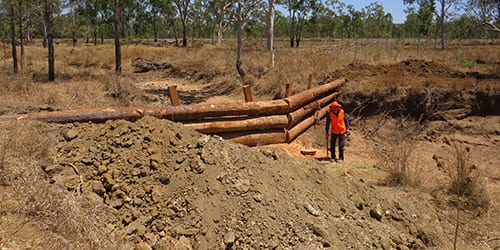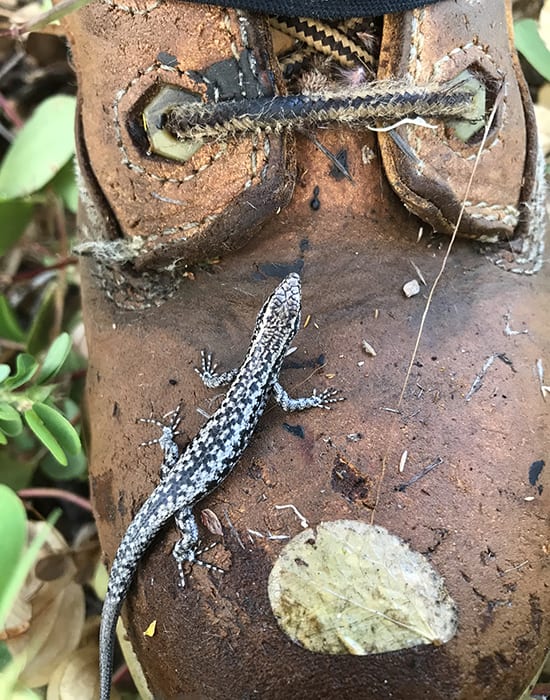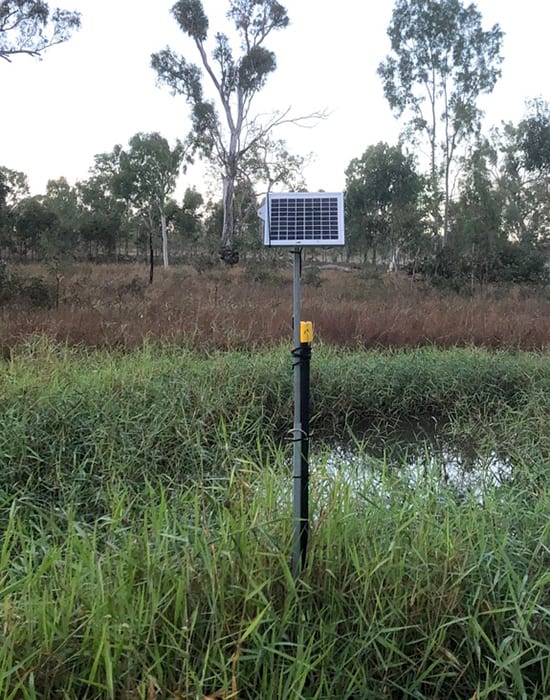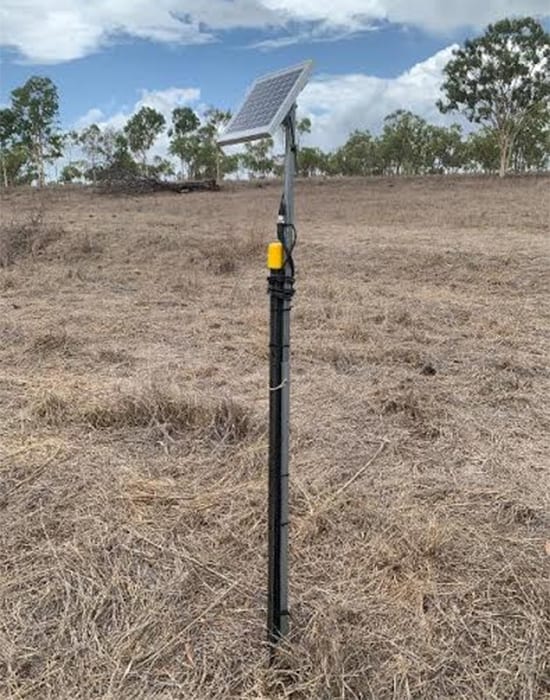
An overview of Monitoring and Evaluation for the LDC project
Mt Pleasant grazier Jamie Gordon explains the concept of The Hub at the first open day in 2019.
Data and results part of learning hub
THE Mount Pleasant Learning Hub, featuring Mulloon Institute landscape rehydration techniques, has been designed to reinstate the hydrological function of the landscape.
Works include five strategically-placed v-notch log and rock sills in the gully, and a “leaky” earth bank to divert water to where it used to flow.
Results
Treatment works were completed on this site in 2019 and only one wet season of monitoring data has been obtained.
The key improvement at this site has been found in the vegetation, on the hillslope and the gully of the treatment site.
Few changes were measured between the treatment and control sites in other water quality indicators, and it is expected that this is because the property and site were in relatively good condition prior to the rehabilitation works taking place – the baseline conditions were already quite high.
The total suspended sediment concentrations at both the Mt Pleasant treatment and control sites, were found to be the lowest concentrations of any of the gully sites measured.
This site will continue to be monitored in the next wet season to see if these results remain consistent. If they do, this site is a good demonstration of what can be achieved in water quality on a stable gully system that is no longer active.
BIODIVERSITY SURVEYS
James Cook University researcher Rishab Pillai with a planigale, pulled from a pitfall bucket trap.
JCU conducting biodiversity surveys
JAMES Cook University is conducting biodiversity surveys to determine if the on-ground works improve water quality and increase biodiversity values at the project site.
This information will also help decide how best to manage biodiversity in a grazing system.
More than 736 animals from 72 species were monitored across all sites.

“The sheer amount of planigales, small carnivorous marsupials, found on Mt Pleasant was impressive. It’s rare to find this many in one location. It’s really good to know they are around”.
— JCU researcher Eric Nordberg
Species abundance was similar at the treatment and control sites.
There was a higher abundance of amphibians at the gully treatment sites, and the control sites supported a higher abundance of reptiles.
Mammal and bird abundance were similar between treatment and control sites.
Amphibian abundance was greater in the post-wet survey undertaken in May 2020, compared to the pre-wet survey undertaken in November 2019.
This indicates that the addition of rain and increased pooling from the dam structures has increased these forms of wildlife, especially frogs.
These surveys detail the species found for each of birds, mammals, reptiles and amphibians and are a valuable pre and post treatment baseline to contrast longer term biodiversity changes attributable to the rehydration works in years to come.
Longer time frames are generally required to better understand how these systems adapt to the water bodies created in the paddocks.
MONITORING REHYDRATION
The Mt Pleasant Learning Hub is a scientific and practical demonstration of how regenerative agriculture practices can restore landscape function in a production (grazing) landscape.
In conjunction with Agrotek, soil moisture monitoring equipment has been installed to collect site specific data to determine how the landscape in both the treatment and control sites are responding to water entering and leaving the sites.
Findings from the soil moisture probes show the rehydration treatment area is holding water longer, which is an intended outcome from this project.
The data is being collected by four capacitance probes with 32 sensors at a depth of 80cm.
Data is logged every 30 minutes to indicate the volume of water in the soil and how this changes over time.
One of the probes will capture below the surface effects of pondage and reduced runoff.
Sheridan Callcott (on the hurdy gurdy) and Sheyanne Frisby (driving in the star picket) install 80cm Agrotek soil moisture probes at the Mt Pleasant Learning Hub and (below) some of the probes in place.












